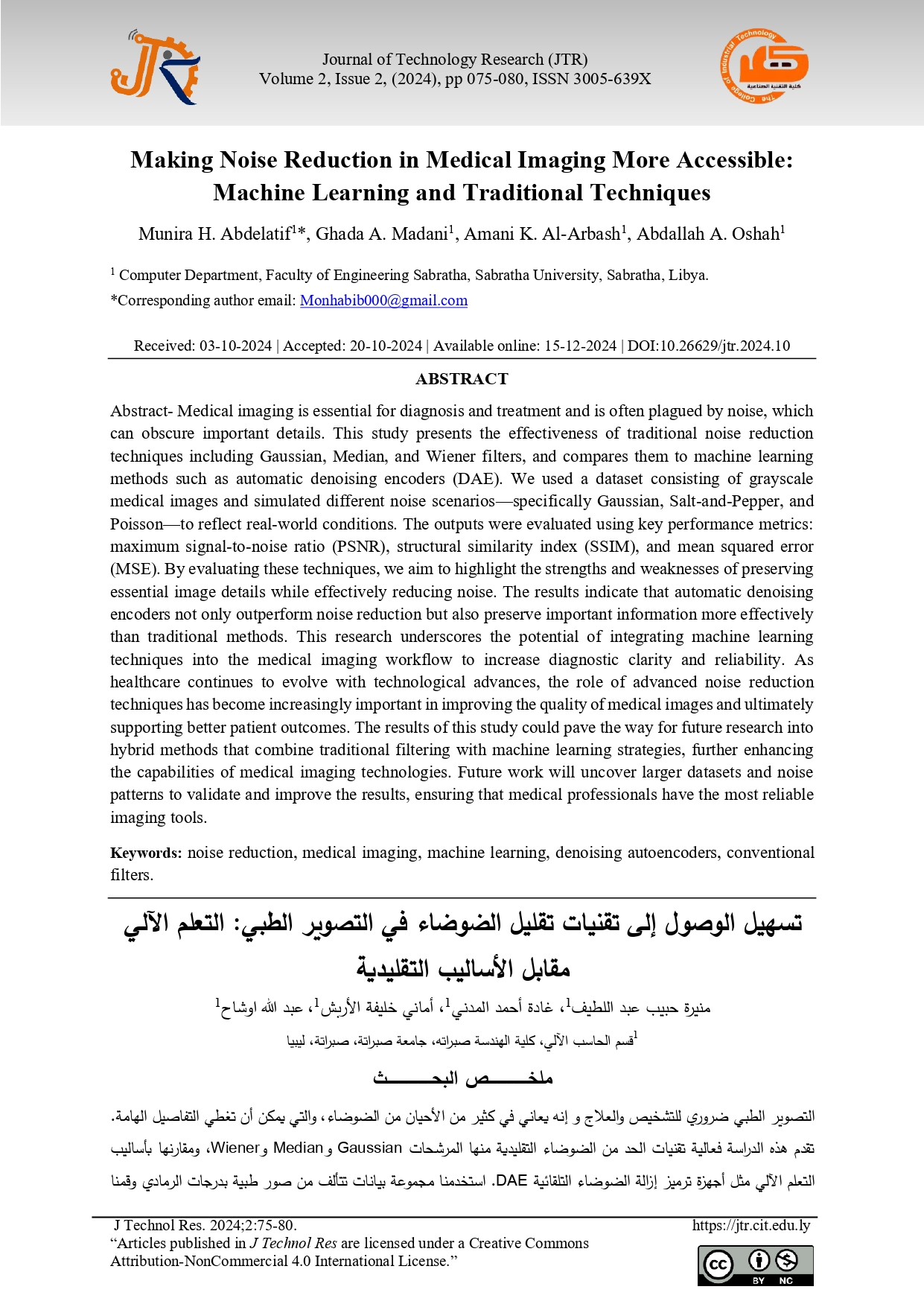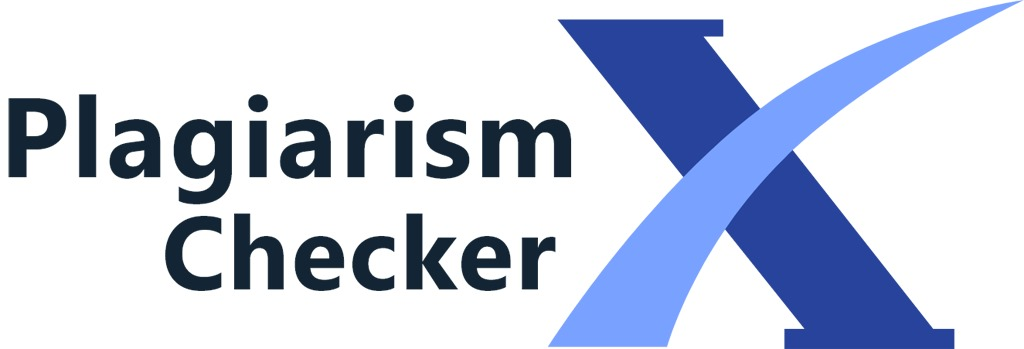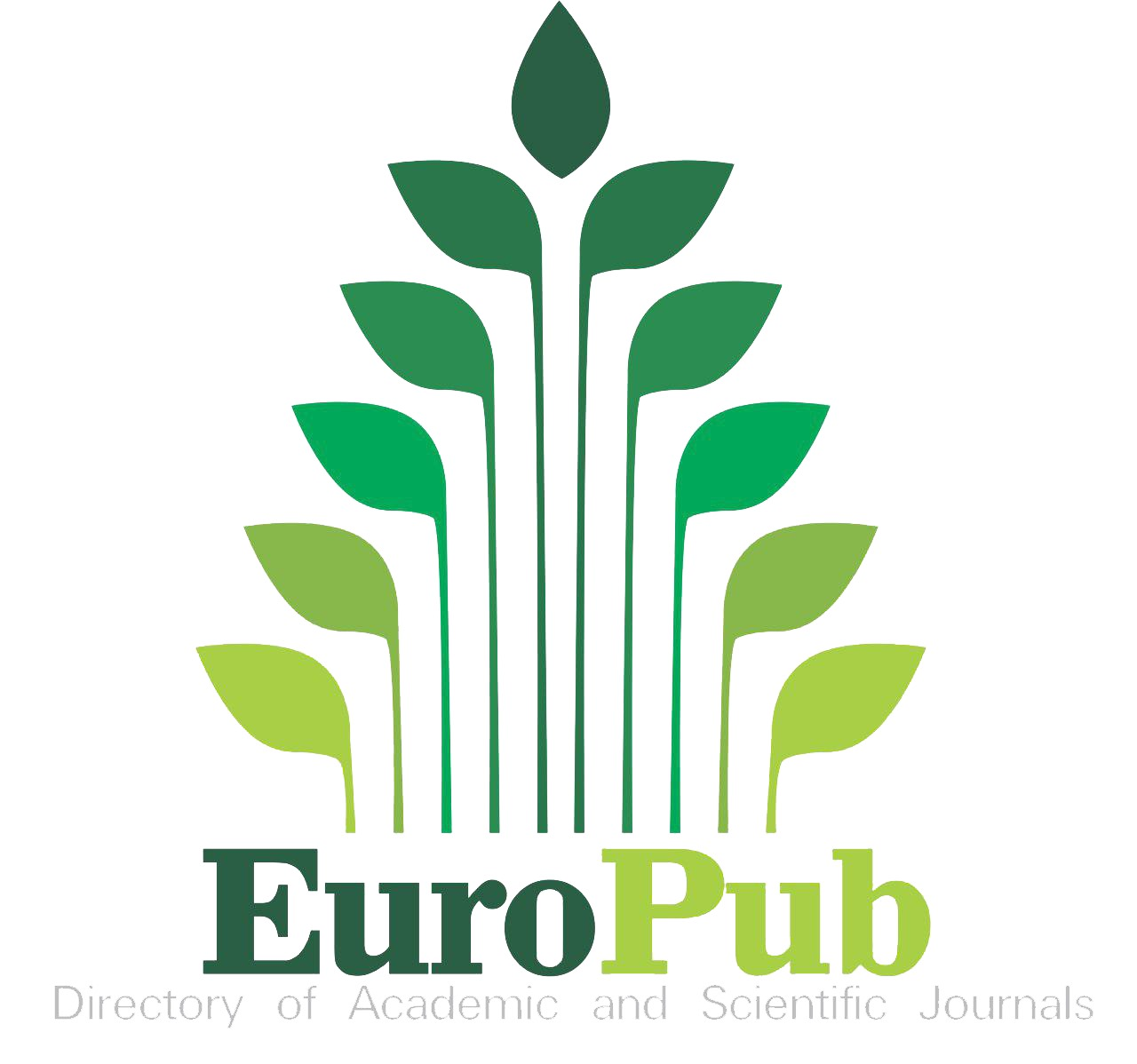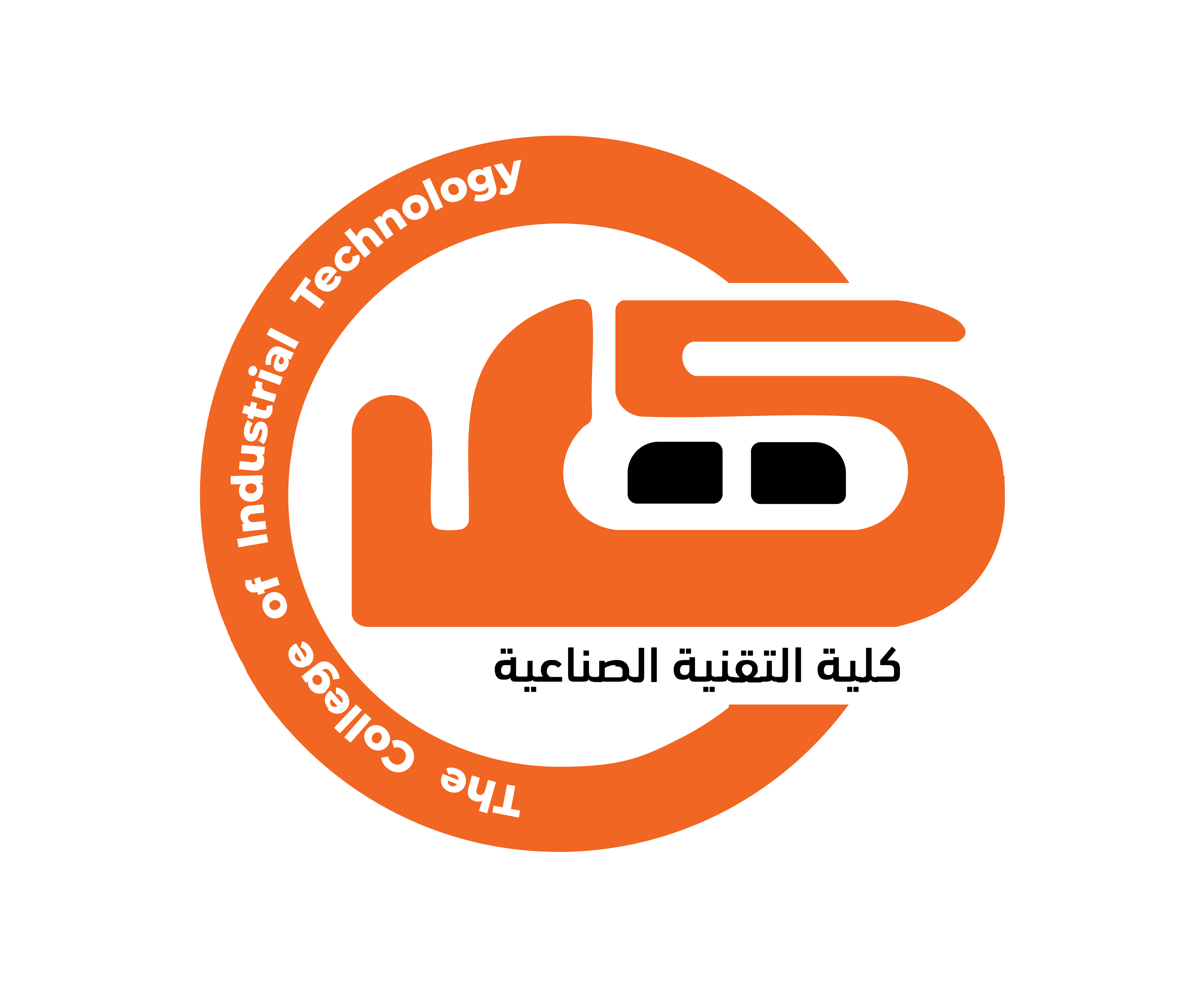Making Noise Reduction in Medical Imaging More Accessible: Machine Learning and Traditional Techniques
DOI:
https://doi.org/10.26629/jtr.2024.10Keywords:
noise reduction, medical imaging, machine learning, denoising autoencoders, conventional filtersAbstract
Medical imaging is essential for diagnosis and treatment and is often plagued by noise, which can obscure important details. This study presents the effectiveness of traditional noise reduction techniques including Gaussian, Median, and Wiener filters, and compares them to machine learning methods such as automatic denoising encoders (DAE). We used a dataset consisting of grayscale medical images and simulated different noise scenarios—specifically Gaussian, Salt-and-Pepper, and Poisson—to reflect real-world conditions. The outputs were evaluated using key performance metrics: maximum signal-to-noise ratio (PSNR), structural similarity index (SSIM), and mean squared error (MSE). By evaluating these techniques, we aim to highlight the strengths and weaknesses of preserving essential image details while effectively reducing noise. The results indicate that automatic denoising encoders not only outperform noise reduction but also preserve important information more effectively than traditional methods. This research underscores the potential of integrating machine learning techniques into the medical imaging workflow to increase diagnostic clarity and reliability. As healthcare continues to evolve with technological advances, the role of advanced noise reduction techniques has become increasingly important in improving the quality of medical images and ultimately supporting better patient outcomes. The results of this study could pave the way for future research into hybrid methods that combine traditional filtering with machine learning strategies, further enhancing the capabilities of medical imaging technologies. Future work will uncover larger datasets and noise patterns to validate and improve the results, ensuring that medical professionals have the most reliable imaging tools.
Downloads

Downloads
Published
Issue
Section
License

This work is licensed under a Creative Commons Attribution-NonCommercial 4.0 International License.














